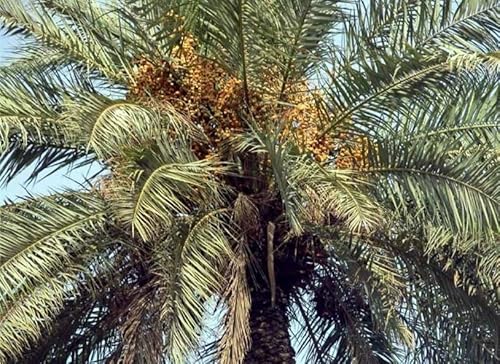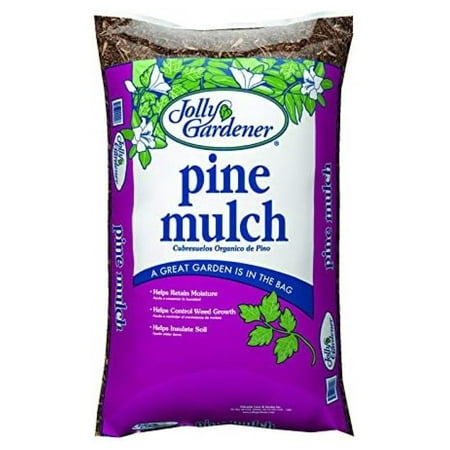Growing a date palm tree for hundreds of pounds of fruit is simpler than you think – expert tips to plant and cultivate one successfully
Discover how date palm trees are both ornamental and productive
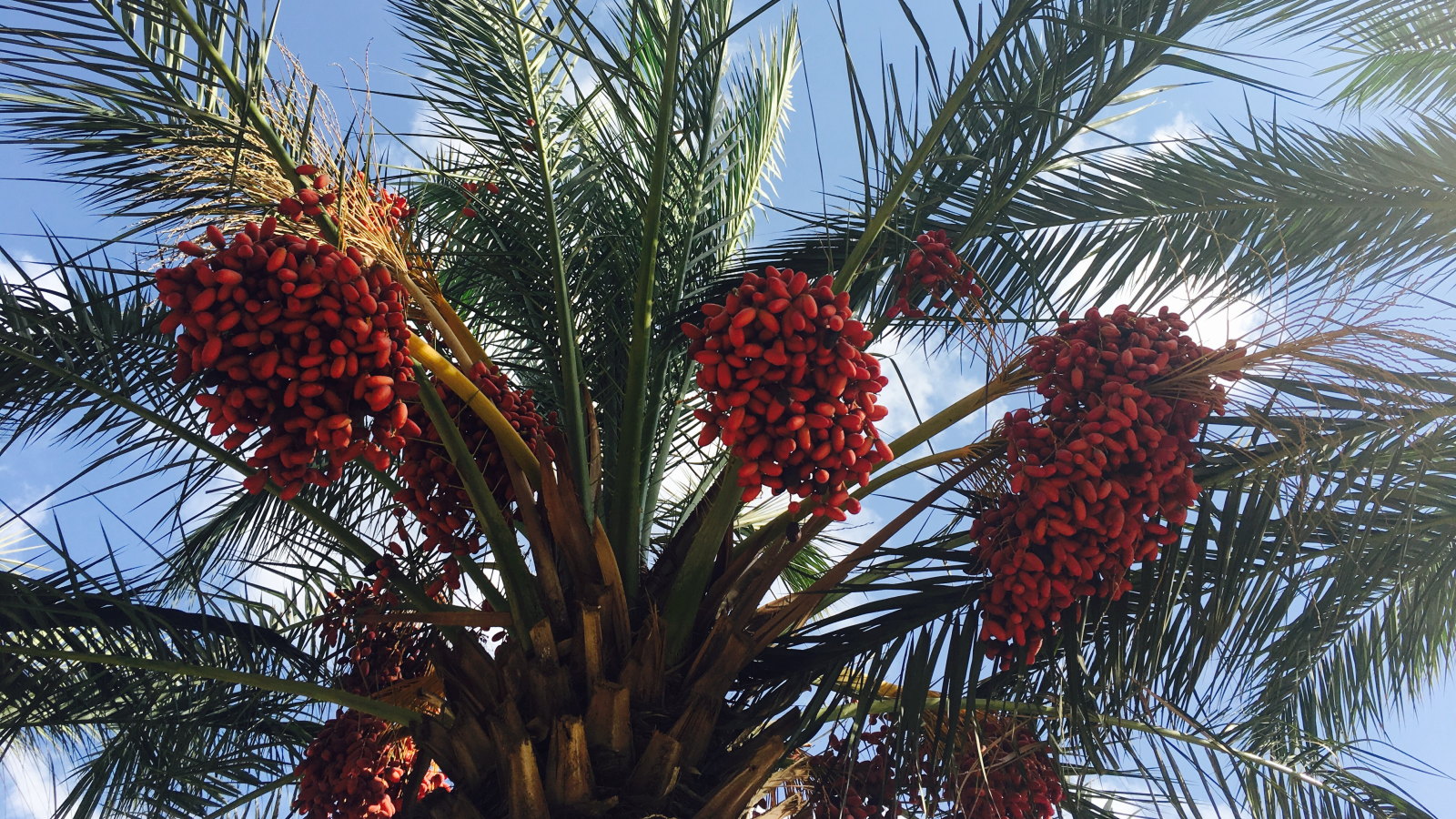

If you live in a tropical or subtropical climate and want a stately, ornamental tree that gives large harvests of sweet fruits, then a date palm tree might be for you. This guide looks at how to grow a date palm tree to show how decorative and low-maintenance it can be.
A date palm tree can strike an imposing figure in any backyard. The slow-growing trees can grow as single or multi-stemmed plants and offer year-round interest with decorative fronds, spring flowers, and golden-brown fruits that can be eaten fresh or dried.
Date palms are most suited to hotter, drier climates, though there are still opportunities to grow the fruit trees in cooler zones. We look at where to grow a date palm tree and how to care for it properly, with growing tips from a tropical tree expert to help you have thriving trees and rich harvests of dates.
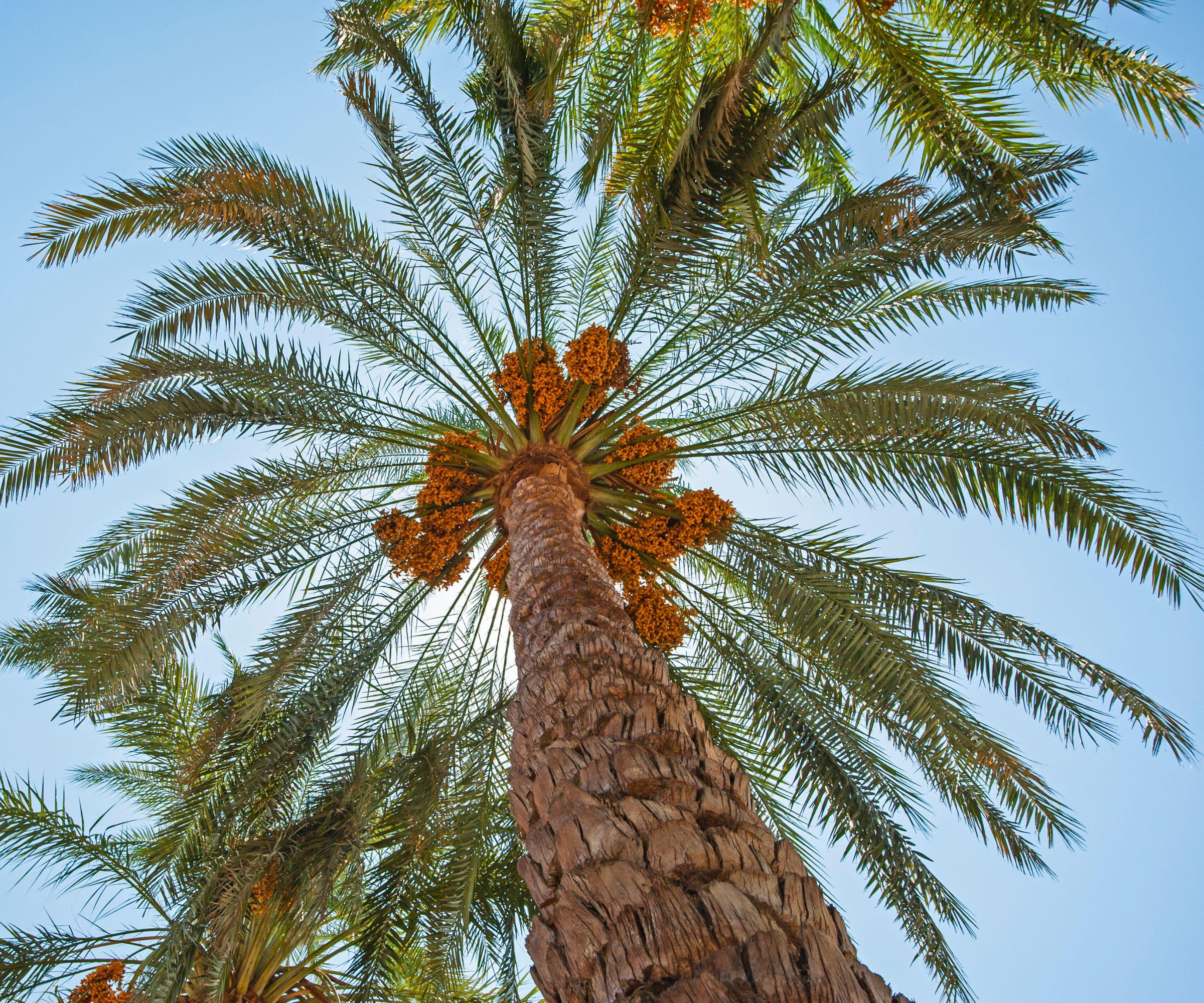
How to grow a date palm tree – an expert guide
The date palm (Phoenix dactylifera) is native to the Middle East and has played a historically important part in agriculture there and in North Africa. Nowadays, it is commonly grown in hot regions of Africa, Asia, Australasia, and southern North America.
Date palm trees are slow-growing yet can reach up to 100 feet in height, depending on the variety. They can provide structure in a garden and can be good trees for shade. Date palms are also highly ornamental with their long fronds and pale flowers in spring.
Those flowers are followed by the tree’s sweet, oval fruits that are rich in antioxidants and natural sugars, with one date palm tree capable of producing 150-300 pounds of fruit per season.
There are different types of date palm trees available to grow, and the most common varieties of date palm trees to grow include ‘medjool’, ‘deglet noor’, ‘fard’, or ‘barhi’. There are also compact types, such as the Pygmy Date Palm (Phoenix roebelenii), that are suitable for smaller spaces or containers.
Design expertise in your inbox – from inspiring decorating ideas and beautiful celebrity homes to practical gardening advice and shopping round-ups.
The date palm tree is not classed as an aggressive or invasive species; however, the Canary Island date palm (Phoenix canariensis) is a close relative of the true date palm tree that has escaped cultivation in southern California and is considered an invasive plant.
Planting tips for date palm trees
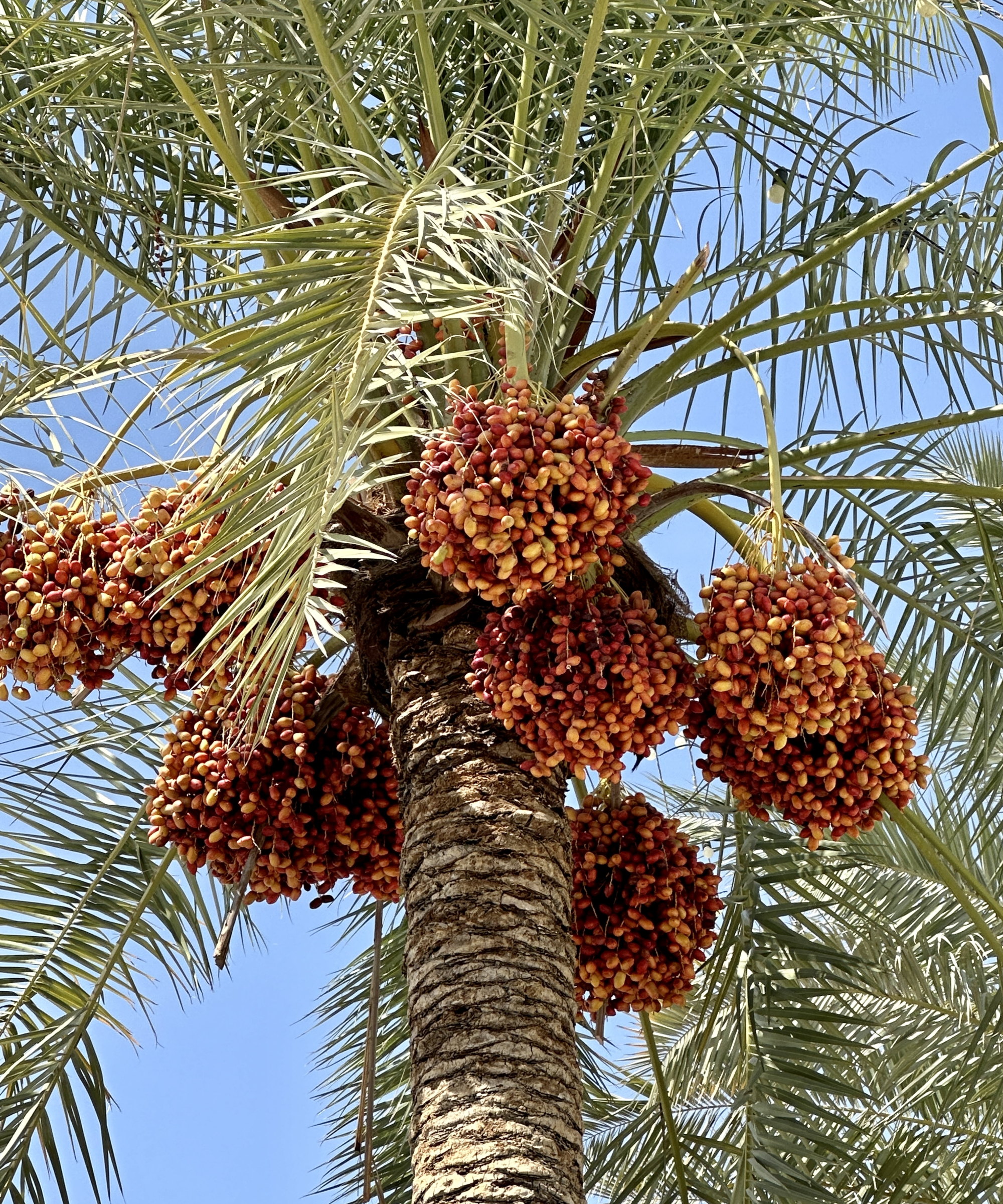
It will come as little surprise to discover that date palms are most suited to warm tropical to subtropical climates. They love warm temperatures, but you can grow the fruit trees in pots in colder climates and bring them outside when the conditions are hot and sunny.
‘Date palm trees thrive in hot, dry conditions of US hardiness zones 9-11,’ says Tatiana Anderson from Top Tropicals.
‘Trees benefit from hot summers with temperatures up to 100°F and can tolerate light freezes once established,’ adds the tropical plant expert. ‘For successful growing and fruit production, date palms need plenty of sun - the more sun the better (at least 8 hours) for healthy growth and fruit production.’
It is vital to grow a date palm tree in well-draining soil, as they can struggle with too much moisture. Date palms also prefer a slightly acidic soil type. If you want to make the soil more acidic, you can add organic mulches of pine needles or oak leaves, or add sulfur to the soil.
The best time to plant a date palm is in fall or early spring. Pick a planting spot at least 20 feet from homes or other structures and dig a large hole to accommodate the root ball when planting a fruit tree.
Date palm trees are either male or female, and you need both to produce fruit. If you are planting multiple trees, space them 20-30 feet apart.
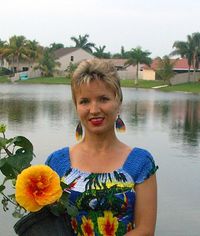
Tatiana Anderson is the co-owner and co-founder of Top Tropicals, based in Fort Myers. Top Tropicals is a rare plant nursery based in South Florida, specializing in unique, hard-to-find plants from around the world.
How to grow a date palm tree – care tips
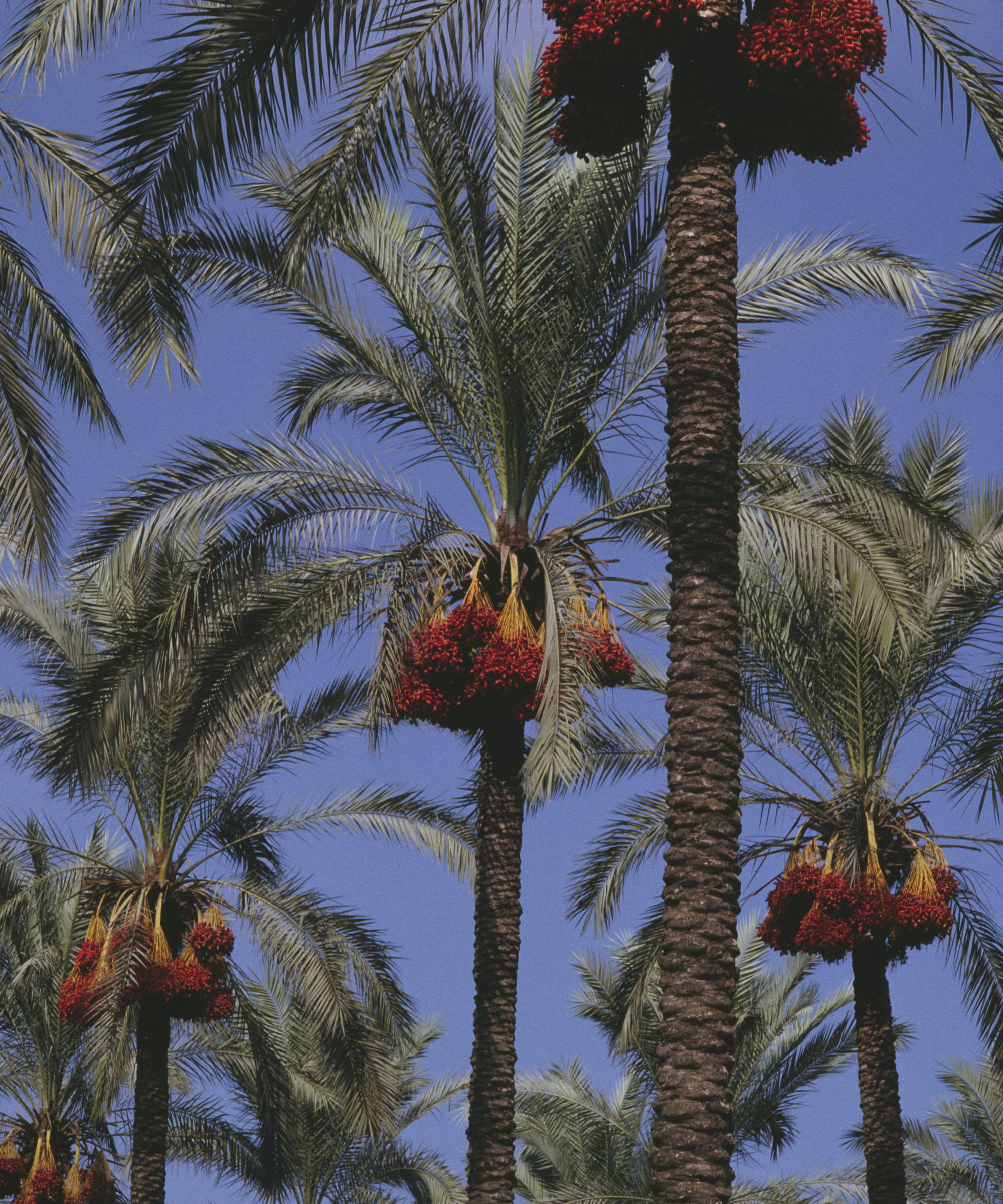
- Watering - Date palms require regular watering while they are young. The soil should be kept consistently moist, but not soggy, as the tree gets established. Once set in their home, date palms are drought-tolerant fruit trees. However, they will still benefit from deep watering during fruiting to produce a good crop. Keep a close eye on when to water plants, and check the moisture levels a few inches under the soil surface. This can be done either with your fingers or a soil moisture meter, available at Walmart.
- Fertilizing - Date palm trees are hungry plants that will benefit from regular feeding, especially during their active growing season. Adding organic matter, such as compost or well-rotted manure, to the soil in late winter or early spring will help to enrich the soil. Tatiana Anderson recommends starting fertilizing the fruit trees in late February or early March before flowering. She adds: ‘You should try to fertilize date palms 3-4 times a year with a palm-specific or balanced slow-release fertilizer high in potassium and magnesium.’ It is advisable to feed when soil temperatures are above 70°F, apply the fertilizer to the canopy zone, and water it in well.
- Pruning - There is usually no need to prune a palm tree regularly as part of ongoing maintenance. Pruning a date palm mainly consists of trimming off old diseased or damaged fronds and removing suckers at the base of the tree. It can also be beneficial to thin clusters of fruit as they develop to help with ripening.
- Fruiting - Date palm trees start fruiting in late summer to fall. Tatiana recommends bagging the clusters to prevent birds from damaging them, and adds: ‘The fruits turn soft, golden brown, or dark when ready,’ she adds. ‘They should be plump and slightly sticky come harvest time’. The fruits do not ripen all at once, so regular checking and picking are required.
FAQs
How long does it take to grow dates?
How long date palm trees take to fruit depends on how you grow them. Plants grown from offshoots can take 4-8 years, while it can take over ten years for date palms cultivated from seed to start fruiting.
Can you grow dates from dried dates?
You can grow dates from dried dates by removing the stone from the date and washing it before planting it into a pot of seed compost. Place the pot on a sunny windowsill, somewhere where it can get temperatures of 70-75°F, and keep it moist for germination. A young plant wants to grow in full sunlight and be potted in larger containers before ultimately going outdoors. However, the drawbacks to growing dates from dates is there is no guarantee what type of tree it will grow into, and it can take ten years-plus to bear fruit.
Growing a palm tree is a great way to add drama and structure to any garden, provided the climate is right. These slow-growing tropical plants are low-maintenance and make focal points of any design for many years to come.
While palm trees tend to prefer hot summers and mild winters, some types can cope with low temperatures. For example, the Wagners Fan Palm (Trachycarpus wagnerianus) is one of the cold-hardiest palms and can tolerate temperatures as low as 5°F.

Drew has worked as a writer since 2008 and was also a professional gardener for many years. As a trained horticulturist, he worked in prestigious historic gardens, including Hanbury Hall and the world-famous Hidcote Manor Garden. He also spent time as a specialist kitchen gardener at Soho Farmhouse and Netherby Hall, where he grew vegetables, fruit, herbs, and cut flowers for restaurants. Drew has written for numerous print and online publications and is an allotment holder and garden blogger. He is shortlisted for the Digital Gardening Writer of the Year at the 2025 Garden Media Guild Awards.
You must confirm your public display name before commenting
Please logout and then login again, you will then be prompted to enter your display name.
